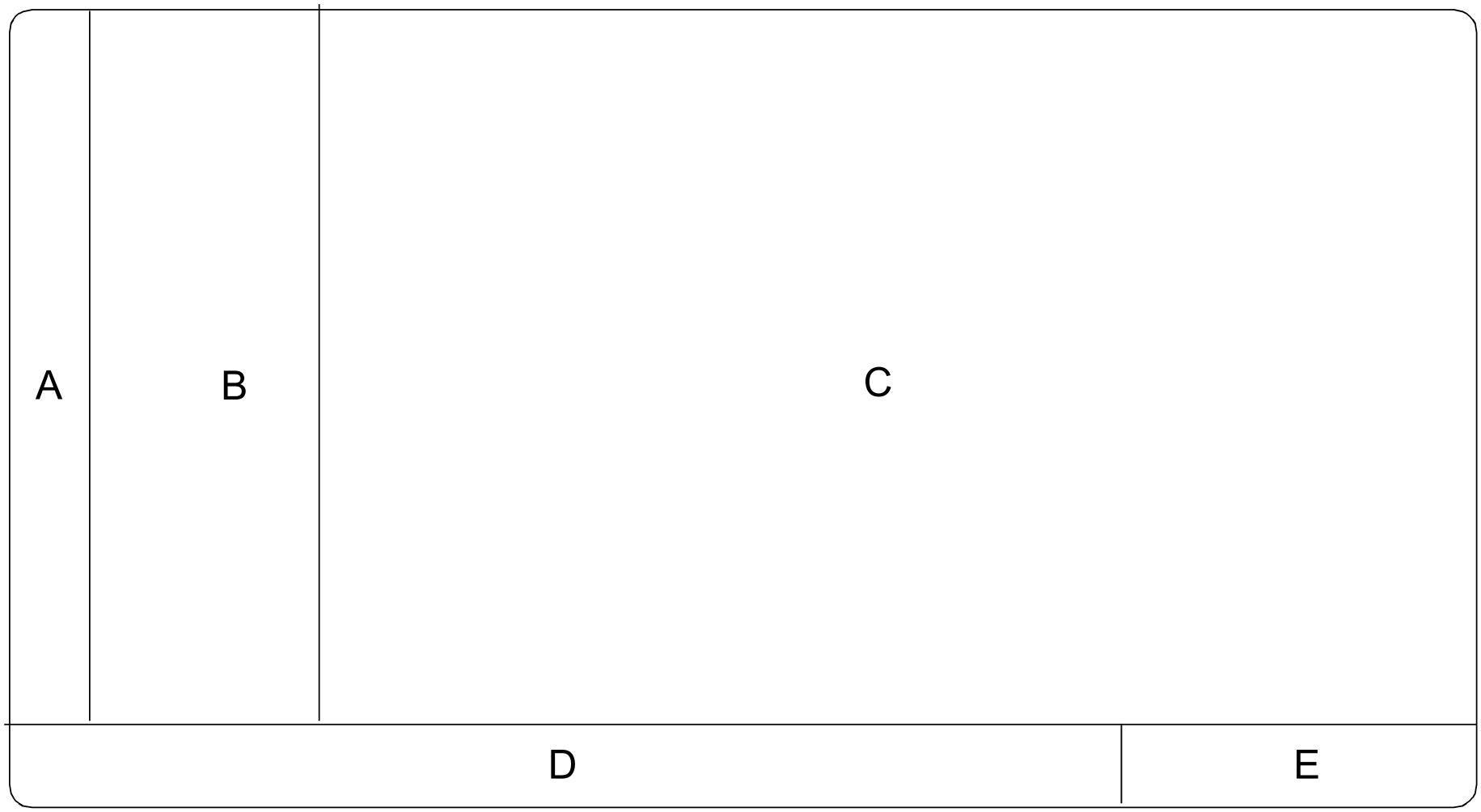The work window subdivides the screen into fields with different functions. The diagram below indicates the structure of the work window with line number display active.
A A + B C D E | = = = = = | Statement code column Line number display Data window Statement line Status indicator |
The display at the terminal is always constructed using the communications character set specified for the terminal. This can be selected automatically by EDT or set explicitly by the user with the @CODENAME statement (format 2) (see also section “Communications character set”).
A valid character set that has been explicitly specified using @CODENAME name, TERMINAL is always set independently of the content of the work files and of the character sets defined for these work files. This character set remains valid until the user changes it again or reactivates EDT's automatic character set selection capability with @CODENAME *AUTO, TERMINAL.
When EDT starts, the character set declared by means of /MODIFY-TERMINAL-OPTIONS is specified.
If EDT's automatic character set selection capability for communications with the terminal is active then EDT proceeds as follows:
If the terminal supports the display of Unicode character sets then the character set
UTFEis defined as the communications character set even if it differs from the character set declared in/MODIFY-TERMINAL-OPTIONS.If the terminal supports 8-bit character sets (but not Unicode), the character set declared by means of
/MODIFY-TERMINAL-OPTIONSis defined. If 7-BIT is specified,EDF03IRVis used as the communications character set, otherwise the specified character set is used.If the terminal can only operate in 7-bit mode,
EDF03IRVis used.
In certain situations, EDT's automatic character set selection capability results in the communications character set being changed in order to optimally adapt the depiction to the displayed contents. A switchover may occur whenever the current work file is changed or when the EDT automatic character set selection capability for communications with terminals is activated (switched on).
If the terminal supports the display of Unicode character sets then
UTFEis set immediately (even without a change of work file).If the terminal supports the display of Unicode character sets then the definition of the communications character set is not modified when the work file is changed. If the terminal can only operate in 7-bit mode, the communications character set never changes.
If the terminal supports 8-bit character sets (but not Unicode) then the defined character set is the one declared for the work file displayed in the (topmost) work file provided that this character set is supported by the terminal.
If this character set is an EBCDIC or Unicode character set and is not supported by the employed terminal thenEDF041is set. If it is an ISO character set then the data is converted to EBCDIC in a way which is transparent to the user and the EBCDIC character set which is assigned to the ISO character set is used.
If the work file displayed in the (topmost) work window is empty and has the character set*NONEthen the character set declared by means of/MODIFY-TERMINAL-OPTIONSis used.
The character set specified for output also defines the character set in which input at the terminal arrives at EDT.
Independently of this character set which is used for transfer purposes, it may nevertheless be necessary to reinterpret the input depending on whether or not it is to be evaluated globally (statement codes, file names in statements etc.) or refers to objects with a separate character set (work files, string variables etc.). The rules for this interpretation of the input, in particular in the case of literals, are described in section “Character sets”.

